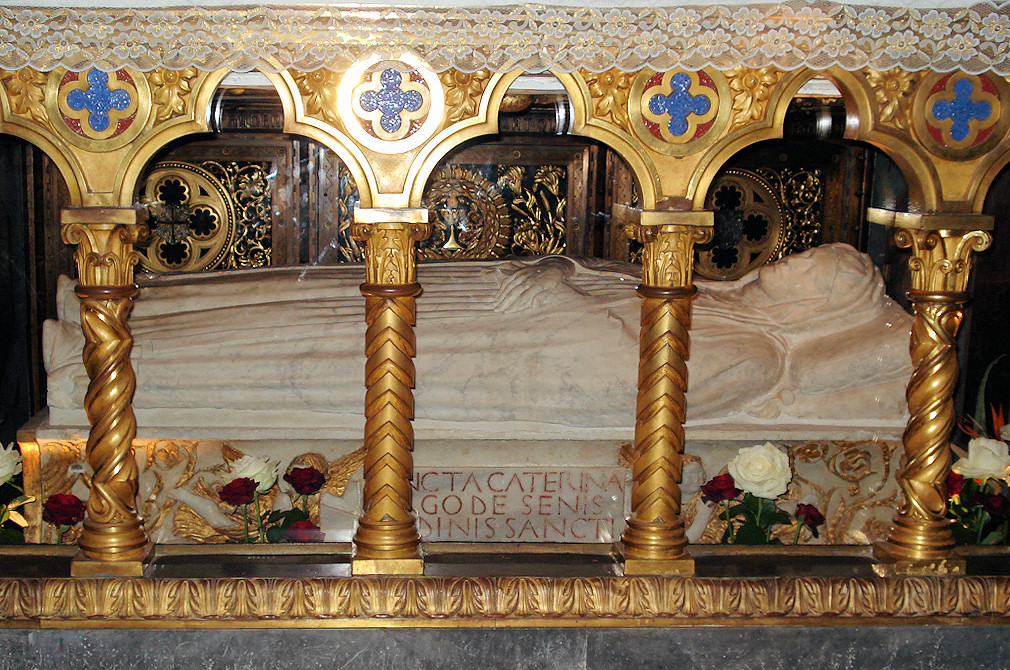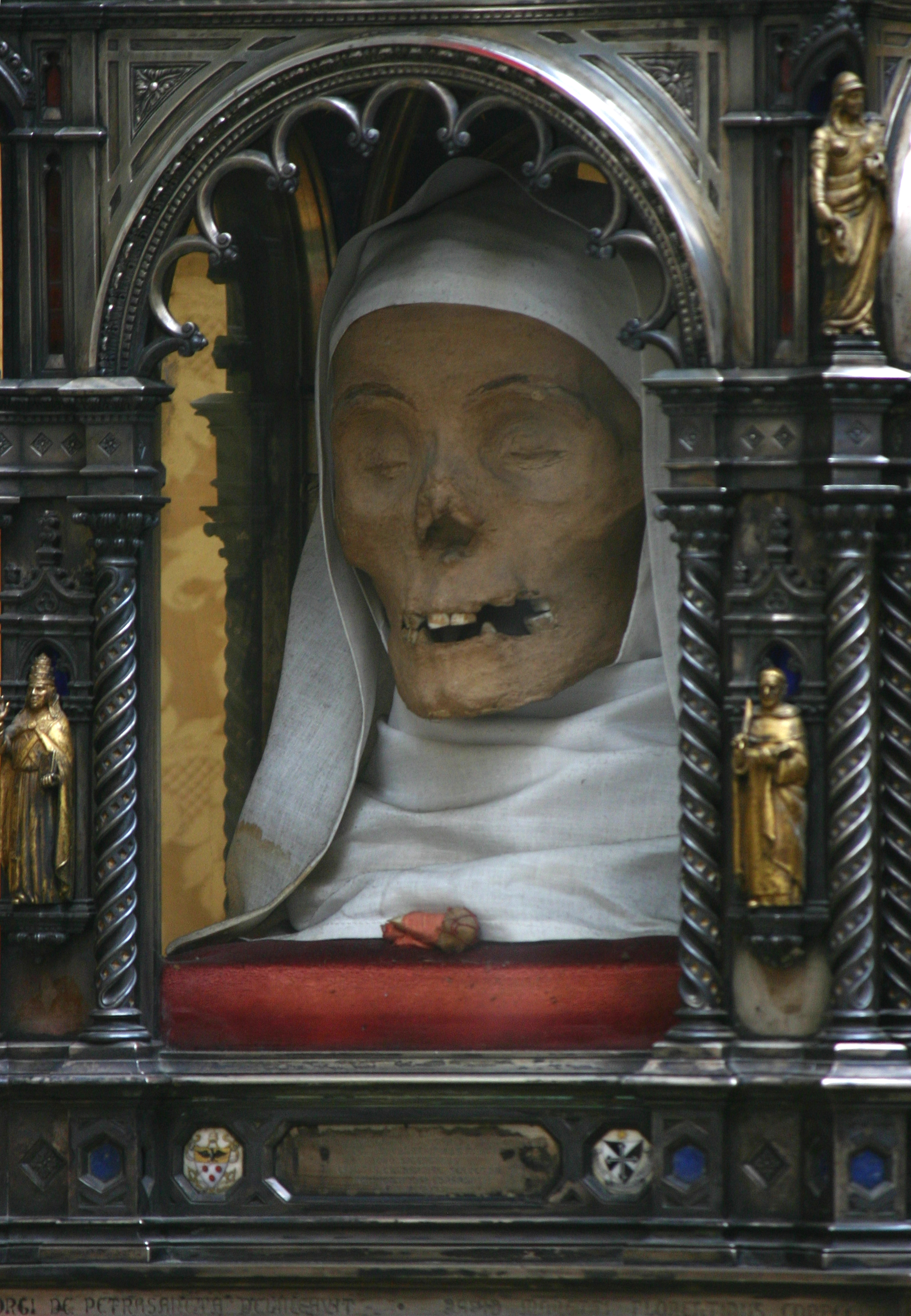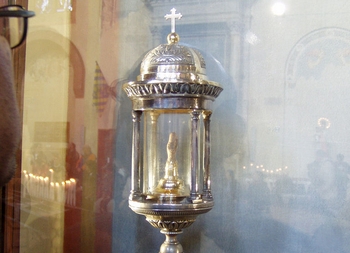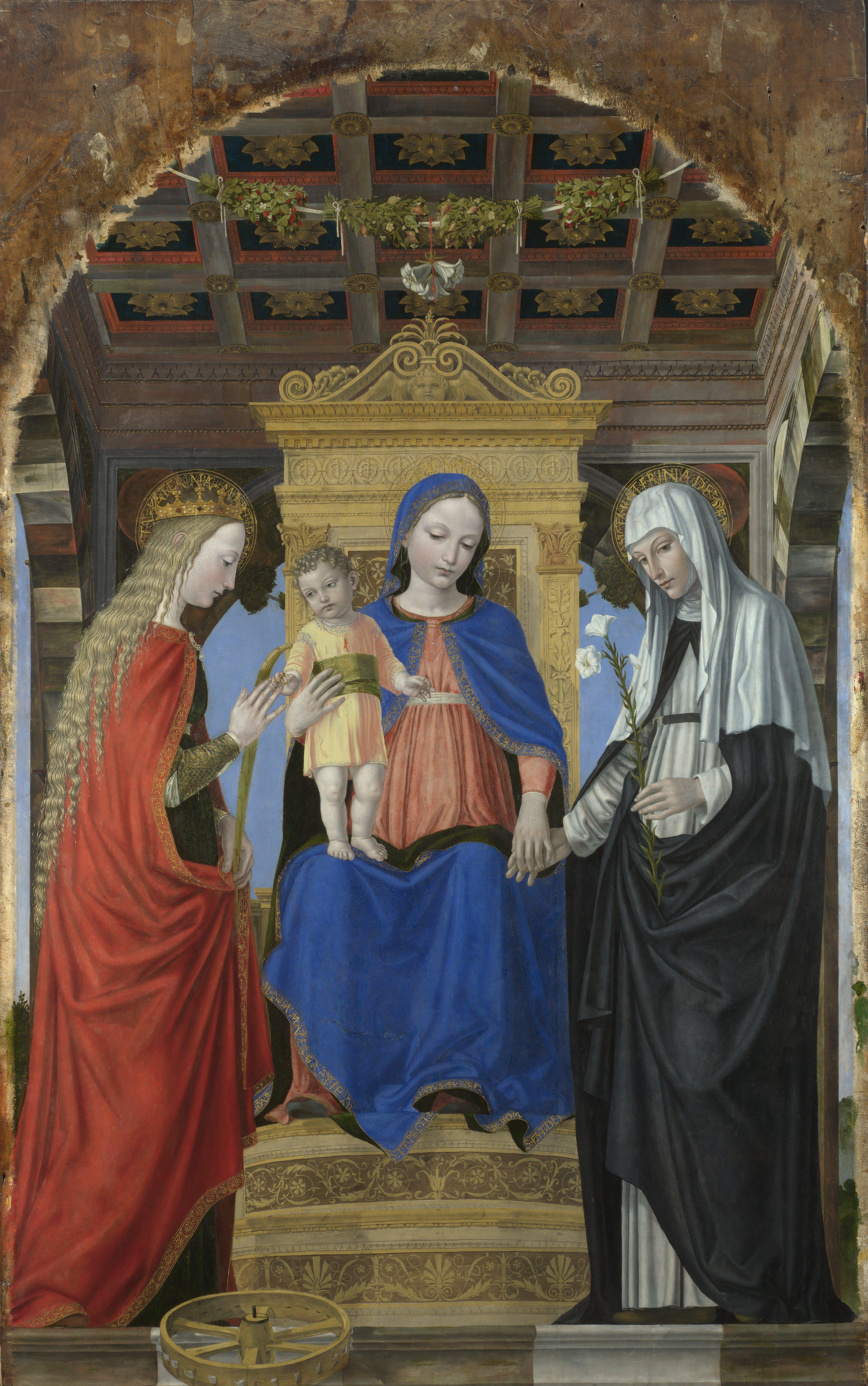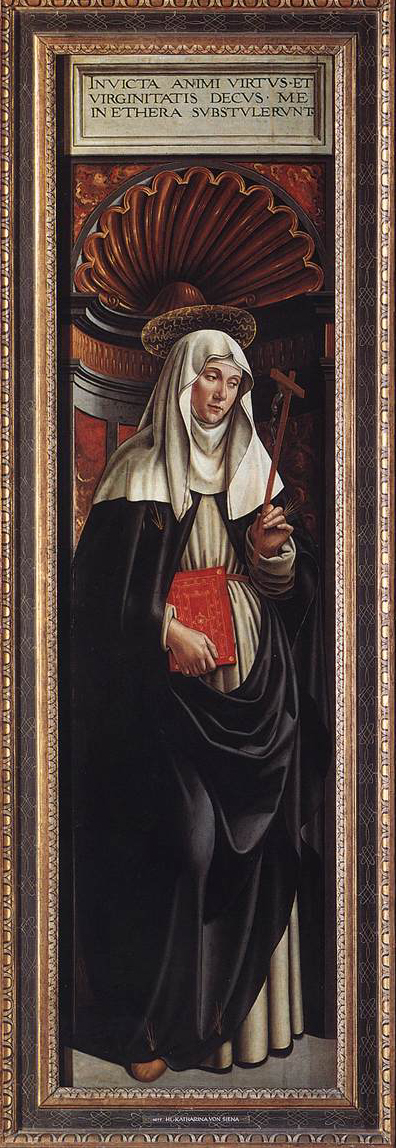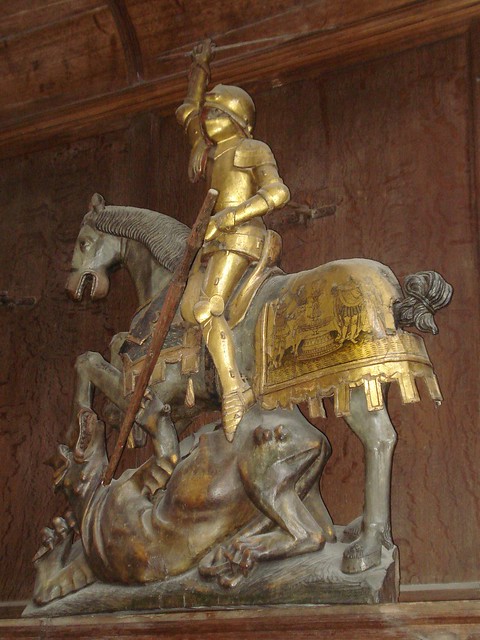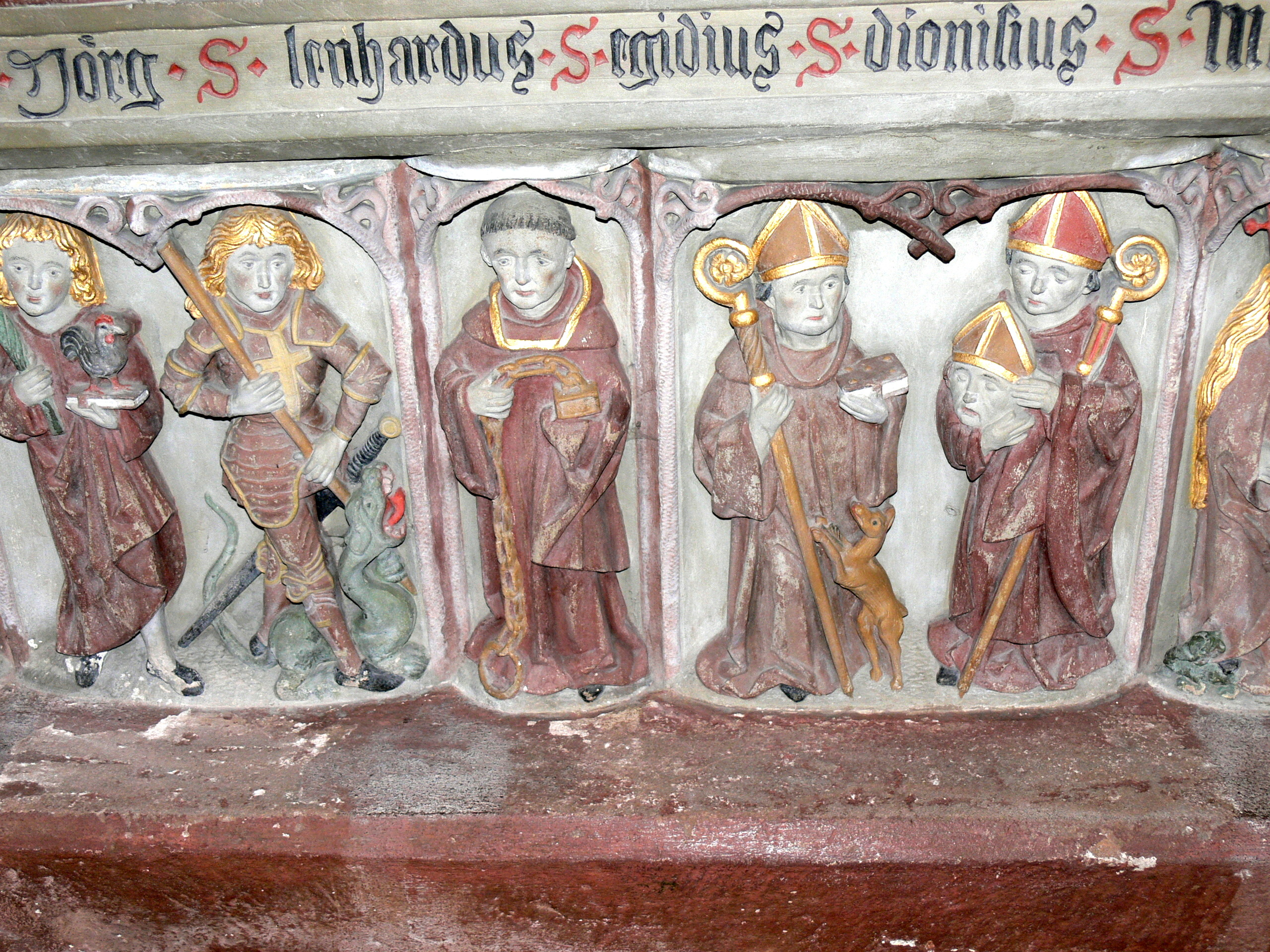John Dillon has posted on the Medieval Religion discussion group the following account of St George and his depiction in art:
We know nothing about the historical George. Lydda (also
Diospolis; later also Georgioupolis) in Palestine is now Lod in Israel.
George's cult seems to have arisen there at some time between the early
fourth century and the early sixth. This page on Lod has a good survey
on George's cult there over the centuries:
http://198.62.75.1/www1/ofm/mad/discussion/086discuss.html
And the section on Lod on this page (toward bottom) has an illustrated introduction to the sequence of churches on the site:
http://198.62.75.1/www1/ofm/sbf/escurs/TS/02_TSen.html
Some period-pertinent images of St. George of Lydda:
a)
as depicted (lower register at right, flanking the BVM and Christ
Child; at left, St. Theodore of Amasea) in a sixth-century encaustic
icon in the Holy Monastery of the God-trodden Mount Sinai in St.
Catherine (South Sinai governorate):
b)
as portrayed in relief (at left; at right, St. Eustachius / Eustathius)
on a wing of the tenth-century Harbaville Triptych in the Musée du
Louvre in Paris:
c) as portrayed in relief in an eleventh-century steatite icon in the Vatopedi Monastery at Mount Athos:
d) as depicted in the eleventh-century frescoes of the church of Agios Georgios Diasoritis near Chalki on Naxos:
http://www.azalas.de/bilder/2012-02/P1200833-1_450
e) as depicted in an earlier twelfth-century Novgorod School icon (1130s-1140s) in the State Tretyakov Gallery in Moscow:
http://tinyurl.com/2byzm9y
NB: Three pages of expandable views of many other twelfth- to sixteenth-century Russian icons of George begin here:
http://tinyurl.com/2wcl5cc
f)
as portrayed in high relief (slaying the dragon) by Nicholaus in the
lunette of the central portal of the earlier twelfth-century facade
(1135) of the the basilica cattedrale di San Giorgio in Ferrara:
g)
as depicted (in the roundel at top centre) in the mid-twelfth-century
mosaics in the church of Santa Maria dell'Ammiraglio (a.k.a. chiesa
della Martorana) in Palermo:
http://tinyurl.com/23oba3r
h)
as depicted (slaying the dragon) in the later twelfth-century frescoes
(betw. 1176 and 1200) in the church of St. George in Staraya Ladoga in
Russia's Leningrad oblast:
http://www.icon-art.info/hires.php?lng=en&type=1&id=1191
i)
as depicted in a probably late twelfth-century votive painting, funded
by a horse tamer, in the narthex of the church of the Panagia
Phorbiotissa at Asinou (Nicosia prefecture) in the Republic of Cyprus:
NB: This image has also been dated to the repainting of the narthex in 1332/1333.
j)
as depicted on a seemingly earlier to mid-thirteenth-century map of
part of the Atlantic Ocean and the Mediterranean (c.1234-1266; Lyon,
Bibliothèque municipale, ms. 175, sheet 4:
http://www.enluminures.culture.fr/Wave/savimage/enlumine/irht8/IRHT_125804-p.jpg
k)
as depicted (the torture of the wheel of swords) in a later
thirteenth-century Cistercian psalter (c. 1260; Besançon, Bibliothèques
municipales, ms. 54, fol. 20r):
l)
as twice depicted in the later thirteenth-century frescoes (either c.1263-1270 or slightly later) in the chapel of St. George in the
monastery church of the Holy Trinity at Sopoćani (Raška dist.) in
Serbia:
1) martyrdom:
http://tinyurl.com/ykdjchv
2) disarticulation of his relics:
http://tinyurl.com/ygqs9s5
m)
as depicted in the later thirteenth-century frescoes (either c.1263-1270 or slightly later) in the chapel of St. Symeon Nemanja in the
monastery church of the Holy Trinity at Sopoćani (Raška dist.) in
Serbia:
http://tinyurl.com/yf8u46h
Detail view:
http://tinyurl.com/ybxkrac
n)
as depicted (the torture of the wheel of swords) in a late
thirteenth-century copy of French origin of the
Legenda aurea (San
Marino, CA, Huntington Library, ms. HM 3027, fol. 49r):
http://digitalassets.lib.berkeley.edu/ds/huntington/images//000867A.jpg
o)
as depicted by Eutychios and Michael Astrapas in the late
thirteenth-century frescoes (c.1295) in the church of the Peribleptos
(now Sv. Kliment Ohridski) in Ohrid:
Detail view:
http://tinyurl.com/j3vtvvd
p)
as depicted (with the Princess of Trebizond) in a fourteenth-century
wall painting in the church of All Saints in Little Kimble (Bucks):
The link has more details about the painting
q)
as depicted (upper register; lower register: Sts. John of Damascus and
Ephraem the Syrian) in an earlier fourteenth-century panel painting in
the Holy Monastery of the God-trodden Mount Sinai in St. Catherine
(South Sinai governorate):
http://tinyurl.com/5ctk4u
r)
as depicted in the earlier fourteenth-century frescoes (between 1313 and
1318; conservation work in 1968) by Michael Astrapas and Eutychios in
the church of St. George at Staro Nagoričane in the Former Yugoslav
Republic of Macedonia:
Detail view:
http://tinyurl.com/hy5vylh
s)
as depicted in the earlier fourteenth-century frescoes (between 1315 and
1321) in the parekklesion of the Chora church in Istanbul:
https://www.flickr.com/photos/21711359@N08/3923046478/lightbox/
Detail view:
http://tinyurl.com/j3jww5f
t)
as depicted (two scenes: the torture of the wheel of swords; his
execution) in an earlier fourteenth-century copy of the
Legenda aurea
in its French-language version by Jean de Vignay (c.1326-1350; Paris,
BnF, ms. Français 185, fol. 90r):
http://tinyurl.com/goymvm9
u)
as depicted (at left: casting down idols; at right: slaying the dragon)
in the earlier fourteenth-century frescoes (between 1335 and 1350) in the
chapel of St. George in the church of the Holy Ascension at the Visoki
Dečani monastery near Peć in, depending on one's view of recent events,
the Republic of Kosovo or Serbia's Kosovo province:
Two pages of expandable views of the cycle of St. George in this chapel start here:
http://tinyurl.com/jjw2xrq
v) as depicted by Vitale da Bologna in a mid-fourteenth-century fresco in the Pinacoteca nazionale di Bologna:
w)
as depicted (slaying the dragon) in a mid-fourteenth-century copy, from
the workshop of Richard and Jeanne de Montbaston, of the
Legenda
aurea in its French-language version by Jean de Vignay (1348; Paris,
BnF, ms. Français 241, fol. 101v):
http://tinyurl.com/zm73cs3
x)
as depicted (slaying the dragon, with a capable assist by his intrepid
steed) by Giovanni di Benedetto and workshop in a late
fourteenth-century Franciscan missal of Milanese origin (ca. 1385-1390;
Paris, BnF, ms. Latin 757, fol. 327v):
http://gallica.bnf.fr/ark:/12148/btv1b8470209d/f658.item.r=.zoom
y)
as depicted (slaying the dragon) by the Master of 1388 (attrib.) in the
later fourteenth-century frescoes in the chiesa di San Giorgio in
Lemine at Almenno San Salvatore (BG) in Lombardy:
z)
as depicted (slaying the dragon) in a late fourteenth-century copy of
the
Legenda aurea in its French-language version by Jean de Vignay
(1382; London, BL, Royal MS 19 B XVII, fol. 109r):
aa)
as depicted (slaying the dragon) in a panel of an earlier
fifteenth-century altarpiece (c. 1420) from Valencia in the Victoria
and Albert Museum in London:
http://tinyurl.com/yfgl2a4
bb)
as depicted (hearing the prayers of the Duke of Bedford) in the earlier
fifteenth-century Bedford Hours (c. 1423; London, BL, Add. MS 18850,
fol. 256v):
http://www.bl.uk/onlinegallery/sacredtexts/images/zoomify/bedfordzoom.html
cc)
as depicted (with the princess of Trebizond) in an earlier
fifteenth-century fresco (late 1430s), variously ascribed to Pisanello
or to his collaborator Gentile da Fabriano, in the cappella Pellegrini
in Verona's chiesa di Sant'Anastasia:
Numerous detail views are accessible from here:
http://www.artcyclopedia.com/commons/pisanello.html
dd)
as depicted (slaying the dragon) by the Master of Catherine of Cleves
in an earlier fifteenth-century prayer book from Utrecht (1438; Den
Haag, Museum Meermanno, cod. 10 F 1, fol. 210v):
http://manuscripts.kb.nl/zoom/BYVANCKB%3Amimi_mmw_10e1%3A082v_min
ee)
as depicted (slaying the dragon) by Jost Haller in a detail of a
painting from his mid-fifteenth-century Tempelhof Altarpiece (c.1445)
in the Musée Unterlinden in Colmar:
The painting as a whole:

ff)
as depicted in grisaille (slaying the dragon) by Jean le Tavernier in
the mid-fifteenth-century Hours of Philip of Burgundy (c. 1451-1460;
Den Haag, KB, ms. 76 F 2, fol. 258v):
http://manuscripts.kb.nl/zoom/BYVANCKB%3Amimi_76f2%3A258v_min
gg)
as depicted (slaying the dragon) by Carlo Crivelli in a panel painting
from his dismembered later fifteenth-century Porta San Giorgio
altarpiece (1470) in the Isabella Stewart Gardner Museum in Boston:
hh)
as depicted (at center, slaying the dragon) in a later
fifteenth-century glass window (1470) in the St. Laurentiuskirche in
Usingen (Lkr. Hochtaunuskreis) in Hessen:

Detail view:
http://tinyurl.com/zhf94jb
ii)
as depicted (slaying the dragon) in a late fifteenth-century copy (c.
1480-1490) of the
Legenda aurea in its French-language version by Jean
de Vignay (Paris, BnF, ms. Français 244, fol. 125v):
jj)
as portrayed (slaying the dragon) by Jan Mertens in a late
fifteenth-century partly gilt wooden sculpture (1486) in the
Sint-Leonarduskerk in Zoutleeuw (Vlaams-Brabant):
Detail view:
http://www.flickr.com/photos/roelipilami/2651856675/
kk)
as portrayed by Andrea della Robbia in a late fifteenth-century
polychrome ceramic relief (1495) in the pieve di San Giorgio at Brancoli
(LU) in Tuscany:
ll)
as depicted (slaying the dragon) in the early sixteenth-century fresco
cycle devoted to him (1507) in the earlier fifteenth-century Nibe kirke
in Nibe (Aalborg Kommune) in Nordjylland:

The remainder of the cycle:
http://tinyurl.com/28h6v9n
http://tinyurl.com/28mdc7x
mm)
as depicted (at right; at left, St. Eustachius / Eustathius) by Hans
Süss of Kulmbach in an early sixteenth-century pen-and-ink drawing (c.
1511) in the Metropolitan Museum of Art, New York:
http://www.metmuseum.org/collection/the-collection-online/search/376653
nn)
as portrayed in relief (second from left) on the early
sixteenth-century tomb of the Kurfürstin Anna (1512) in the Münster St.
Marien und Jakobus in Heilsbronn (Lkr. Ansbach) in Bavaria:
Madeleine Gray added these notes and images of the wall painting of St George at Llancarfon in south Wales:
There are photos on
http://www.walesonline.co.uk/lifestyle/nostalgia/welsh-history-month-lost-treasures-7852432 and Ellie Pridgeon;s wallpaintings web site at
https://medievalwallpaintings.wordpress.com/2013/12/26/project-update-st-cadocs-church-llancarfan-vale-of-glamorgan/ ; the church web site leads to some rather out of date interpretative material at
http://www.stcadocs.org.uk/en/home.html (conservation has uncovered a lot more since that photo was talen): and there's a short film with rather basic commentary at
http://www.bbc.co.uk
/news/magazine-25214557
Rev.Gordon Plumb added these images of English medieval stained glass depictions of St George:
Brinsop, St George,
Herefordshire, east window, 2b, St George, 1st half 14thc:
Gloucester
Cathedral, East window, figure on right, c.1350-60:
Long Sutton, St
Mary,
Lincolnshire, sVI, 2b-3b,
c.1380-90:
Trull, All Saints,
Somerset, sII, 2c,
15thc:
Wells Cathedral,NII,
2b-3b:
York Minster, nXVII,
2a, 15thc.:
Stanford-on-Avon, St
Nicholas, Northamptonshire, sVI, 2a, 15thc.:
Oxford,
Merton
College,
West window, 15thc.:
St Winnow, St
Winnow,
Cornwall, sII, 5a-7a,
15thc.:
York Minster, nXX,
lower part of George and dragon, 15thc.:
Fairford, St Mary,
Gloucestershire, nVIII, B2 c.1500-1515:
Barton upon Humber,
St Peter (in store with English Heritage in
York):
Bowness-on-Windermere,
St Martin,
Cumbria, East
window, 2b-4b, 15thc.:
Doddiscombsleigh, St
Michael, Devon, nIV, 2b,
15thc.:


